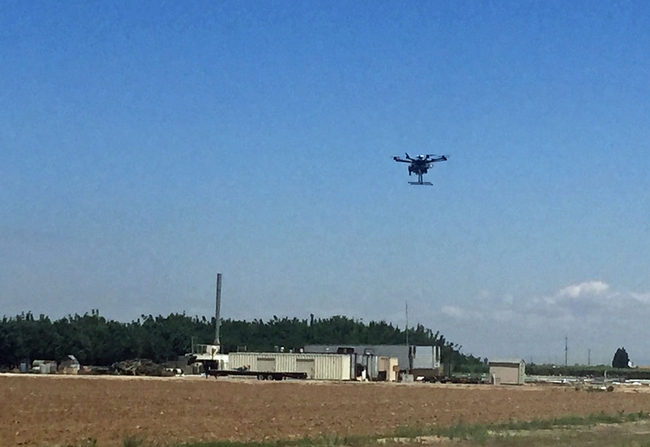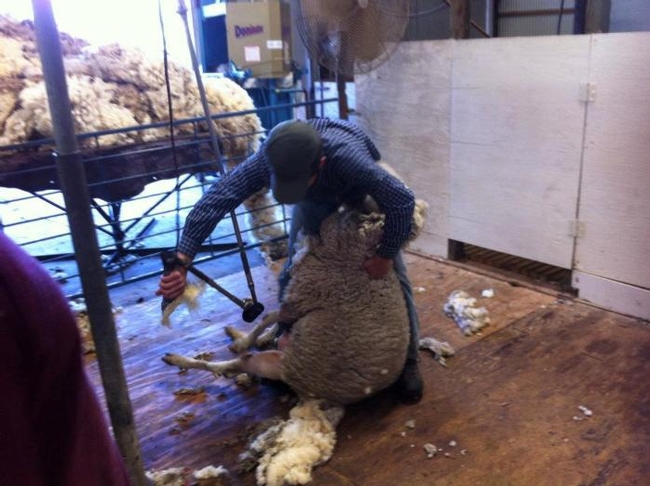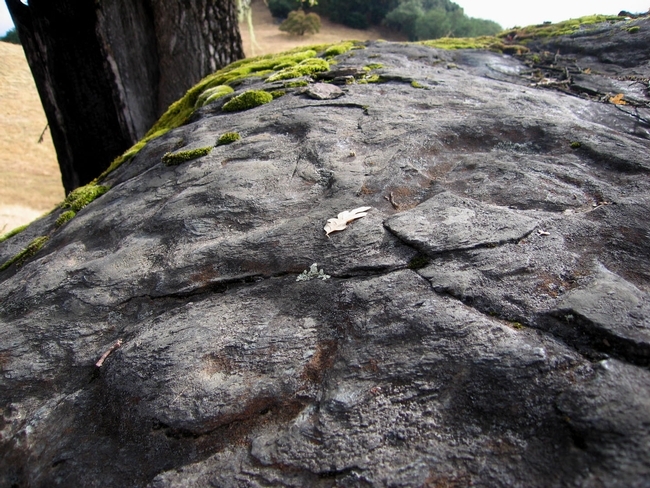Posts Tagged: research
Drone technology on display at UC research center
The UC Desert Research and Extension Center hosted a workshop for employees and local stakeholders on potential uses for drone technology in agriculture, reported Edwin Delgado in the Imperial Valley Press.
“The intent of this workshop is to start bringing the knowledge about unmanned aerial systems to the University of California Agricultural and Natural Resources division and the public at large,” said Sean Hogan, coordinator of Informatics Geographic Information Systems for UC ANR. “There is so much curiosity about it right now, it's a growing industry and there is a lot of concern and controversy about the misuses on it.”
The article said the UC system now has the green light to begin using drones. Hogan is holding workshops throughout the state to share his expertise with UC ANR employees and members of the community.
Desert Research and Extension Center director Jairo Diaz said the workshop was important because participants were able to see a demonstration of how the technology works and how it can be applied to the projects and research they are currently working on.
“These workshops that give growers and stakeholders can use in the area are very important because tech like this can help in the near future help find out different types of issues on the field like management of nutrients, water and find out to improve management of field,” Diaz said.
At the UC Kearney Agricultural Research and Extension Center last week, technicians tested a drone that will be used throughout the summer to collect growth data on 600 varieties of sorghum begin produced under different irrigation regimens. With imaging and lidar, the drone collects information on leaf area and biomass in half an hour that would take a full day for a person in the field.
Read more about the sorghum research at Kearney here.
'Wild and wooly' sheep shearing class held at Hopland
Many sheep shearing students said the process was "the hardest thing they have ever done," reported Glenda Anderson in the Santa Rosa Press Democrat. The newspaper ran a lengthy feature and a photo gallery of the annual sheep shearing school held at the UC Hopland Research and Extension Center this week.
Reporter Justine Frederiksen of the Ukiah Daily Journal also reported on the sold-out sheep shearing and wool classing training at the 5,300-acre Mendocino County research center.
“And 60 percent of these people had never even touched a sheep before,” said John Harper, UCCE advisor and shearing school leader. Nearly all the students were women and included an artist from San Francisco, a retired fire chief, a UC Davis graduate student, and a woman who was learning to shear ahead of travels to New Zealand “because I think it will be a good skill to have for work, in case I want to stay for a couple of months.”
“One of the things new students have the most trouble with is what we call ‘tipping' the sheep, or flipping them over,” Harper said. He explained that, to get the sheep into the ideal starting position, you need to push its back legs down with one hand and tuck its head in with the other, twisting the animal into a sitting position with all four legs dangling.
UC Hopland REC sheep shearing students are part of a new wave of sheep shearers and wool enthusiasts industry officials hope will reverse decades of disinterest and decline. The shearing classes were booked well ahead of time, said Hannah Bird, a community educator at the research station. Many students are seeking a break from city life or jobs tying them to a desk.
Wrote reporter Glenda Anderson, shearing sheep is sweaty, back-straining work that earns just $2 to $5 per sheep. But an expert sheep shearer taking part in the program said sheep shearing for a living has its benefits.
“It's a lifestyle thing. I could work six months a year and travel around the world,” paying for the travel by working here and there, he said.
Mendocino County no longer to contract with USDA Wildlife Services
Mendocino County supervisors decided to sever ties with the USDA's division of Wildlife Services, reported Peter Fimrite in the San Francisco Chronicle. The decision was made after environmental groups said the agency was indiscriminately killing predators, such as mountain lions and coyotes, because they are a threat to livestock.
The article featured a gallery of 10 artful photos taken at the UC Hopland Research and Extension Center, which maintains a research sheep flock of 500 breeding ewes. Record-keeping of sheep losses to predators began at Hopland in 1973. Coyotes are the most serious predator problem.
Hopland staff use a variety of non-lethal and preventative methods to protect sheep from predators, such as fencing, mob grazing and frequent pasture rotation and guard dogs, according to Kim Rodrigues, the director of the research and extension facility. Currently there are five guard dogs at the center. The guard dogs bond with sheep and protect them primarily by barking and other aggressive behaviors when strangers or predators are near the sheep flock.
Software developer quits job to shear sheep
"This year, I was on a ranch almost every weekend from January through June," Wilke said. "I got pretty burnt out."
With skills honed in three five-day sessions of training at the UC Agriculture and Natural Resources facility in Hopland, she has found she can earn between $50 and $100 per hour shearing sheep.
John Harper, UC ANR Cooperative Extension advisor in Mendocino County, has hosted the sheep shearing school for 20 years and has 40 years experience with sheep shearing.
"It is the longest running shearing school in California and I believe it's currently the only one," Harper said.
The training school started with instructors imported from New Zealand. When the cost of travel became prohibitive, Harper brought in Mike McWilliams from Oregon. Later Gary Vorderbruggen, who trained under McWilliams, became the chief instructor.
The five-day course will be offered again in 2016 with classroom instruction, demonstrations and hands-on experience. Beginning and experienced shearers have the opportunity for one-on-one training. Class dates have not yet been decided. Registration information will be posted on the Sheep Shearing School webpage.
View a PDF version of the Sheep Magazine article by clicking the link below.
Sheep Magazine article
UC invites community to view archaeological sites at research center
Dozens of northern California residents are expected at the UC Hopland Research and Extension Center on Saturday to take part in activities to celebrate California Archeology Month, reported Sarah Reith in the Ukiah Daily Journal.
"Archaeology for All" is offered jointly by Hopland and local Tribal Historic Preservation Offices. The research center is located on historic Hopland Pomo land and is the site of many rocks that were used in rituals thousands of years ago, the article says. Visitors on Saturday will see tribal markings on the site which are thought to be more than 5,000 years old.
"It's not artwork," said Donna Gillette, an archaeologist who specializes in rock art. "It's a good chance (the markings) are the result of ritualistic quarrying of material, probably for increase," or human fertility.
Before beginning to study rocks at Hopland, Gillette asked permission from the tribal group. The Historic Preservation Offices assigned Shawn Padi to work with her. Padi and another representative of the Tribal Historic Preservation Offices, Hillary Renick, will present talks at Saturday's event. Renick also plans to prepare and serve acorns, a traditional Native Californian stable, to participants.
The event will be at Rod Shippey Hall, 4070 University Road, in Hopland, from 10 a.m. to 2 p.m. on Saturday, Oct. 10. Tickets are $10 for adults. Children under 12 will be admitted free. Advance reservation required. For more information, call Hannah Bird at (707) 744-1424 ext. 105.





